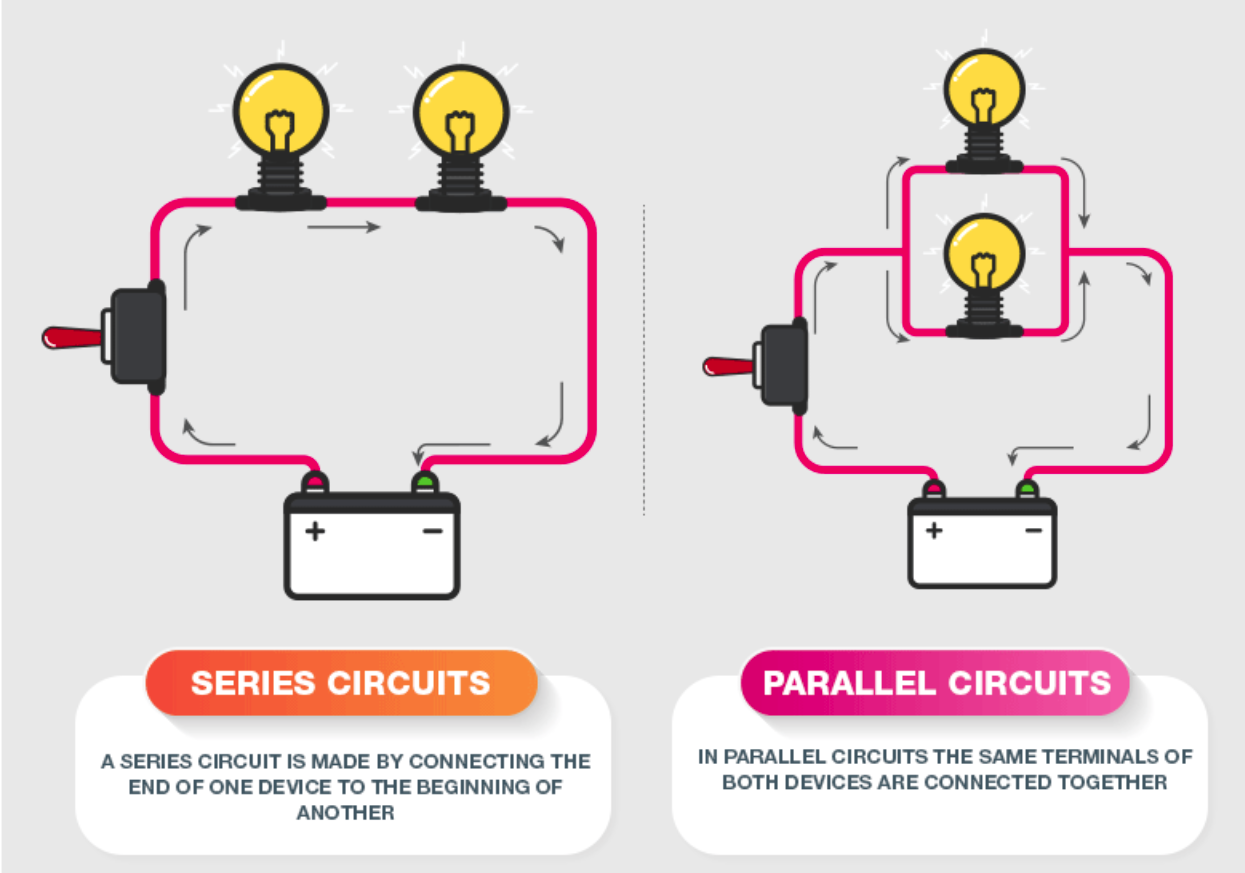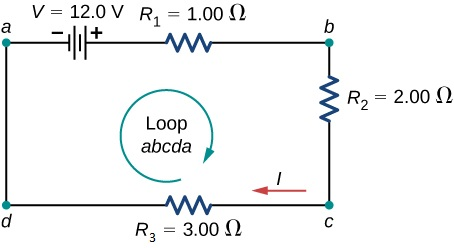Kirchhoffs Loop Rule: An Essential Guide to Circuit Analysis
Kirchhoff’s Loop Rule, also known as Kirchhoff’s Voltage Law (KVL), is a cornerstone principle in electrical engineering and physics. It provides a systematic method for analyzing electrical circuits by applying the principle of energy conservation. In this blog, we will explore Kirchhoff’s Loop Rule, its applications, and related concepts like series and parallel circuits. We’ll also include practical examples to deepen your understanding of circuit analysis.
What is Kirchhoff’s Loop Rule?
Kirchhoff’s Loop Rule states that the sum of all voltage drops and voltage gains around any closed loop in a circuit must equal zero. This rule is rooted in the conservation of energy: all the energy supplied by a power source is used up as the current flows through the circuit components.
Key Points:
Energy Conservation:
Electrical energy is converted into other forms of energy (e.g., heat, light).
As electrons complete the loop, they return to the power source with zero energy.
Voltage Drops and Gains:
Voltage gains occur at power sources (e.g., batteries).
Voltage drops occur across resistors, capacitors, or other components as energy is transferred.
Mathematical Representation: Where:
: Sum of voltage drops and gains in a loop.
Series and Parallel Circuits
Circuit components can be connected in series or parallel configurations. Understanding these connections is critical for applying Kirchhoff’s rules effectively.

Series Circuits:
Characteristics:
Single path for current flow.
Voltage is divided across components.
Total resistance increases with added resistors:
Applications:
Voltage dividers.
Increasing circuit resistance.
Parallel Circuits:
Characteristics:
Multiple paths for current flow.
Voltage is the same across all branches.
Total resistance decreases with added branches:
Applications:
Distributing current to multiple devices.
Reducing overall circuit resistance.
Kirchhoff’s Voltage Law (KVL)
KVL is an essential tool for analyzing circuits to determine voltage, current, and resistance. It simplifies complex circuits by breaking them into smaller loops and applying the loop rule.

Practical Steps for Applying KVL:
Identify Closed Loops:
Choose one loop at a time in the circuit.
Assign Voltage Polarities:
For each component, assign a voltage drop or gain based on current direction.
Apply the Loop Rule:
Write the equation for the sum of voltages around the loop:
Solve Equations:
Use Ohm’s Law to express voltages in terms of current and resistance.
Solve for unknowns such as current or voltage.
Example:
Problem: A circuit has a 12V battery, a 4 resistor, and a 2 resistor in series. Find the current flowing through the circuit.
Solution:
Total resistance:
Current:
Kirchhoff’s Junction Rule
Kirchhoff’s Junction Rule complements the Loop Rule by applying the conservation of charge. It states that the sum of currents entering a junction equals the sum of currents leaving the junction:
Application:
Combine with KVL for analyzing complex circuits with multiple loops and branches.
Ensure current distribution is accurate at each junction.
Series vs. Parallel: Voltage and Current Behavior
Series Circuits:
Voltage:
Divided among components.
Total voltage equals the sum of individual voltage drops.
Current:
Same through all components.
Parallel Circuits:
Voltage:
Same across all branches.
Current:
Divided among branches based on resistance.
Practical Example:
Problem: Two resistors (6 and 3) are connected in parallel. Find the equivalent resistance and total current if connected to a 12V battery.
Solution:
Equivalent resistance:
Total current:
Energy Conservation and Circuit Behavior
Why KVL Works:
Energy supplied by the power source equals the energy dissipated by components.
Ensures that no energy is lost or created within the loop.
Common Applications:
Designing Circuits:
Ensure voltage and current requirements are met.
Troubleshooting:
Identify faults by checking voltage consistency across components.
Practice Question
Problem: In the circuit below, a 9V battery powers a loop containing a 3 resistor, a 2 resistor, and a 1 resistor in series. Calculate the current and voltage drop across each resistor.
Solution:
Total resistance:
Total current:
Voltage drops:
Conclusion
Kirchhoff’s Loop Rule is an indispensable tool for analyzing and designing electrical circuits. By understanding the conservation of energy and applying KVL in conjunction with the Junction Rule, you can tackle even the most complex circuit problems. Whether you’re troubleshooting a faulty device or designing a new system, mastering these principles ensures success in the world of electronics.







